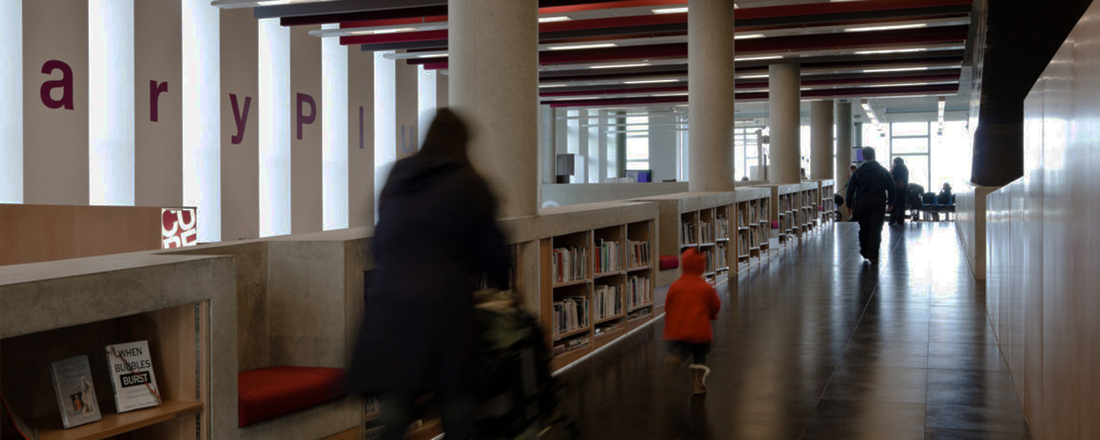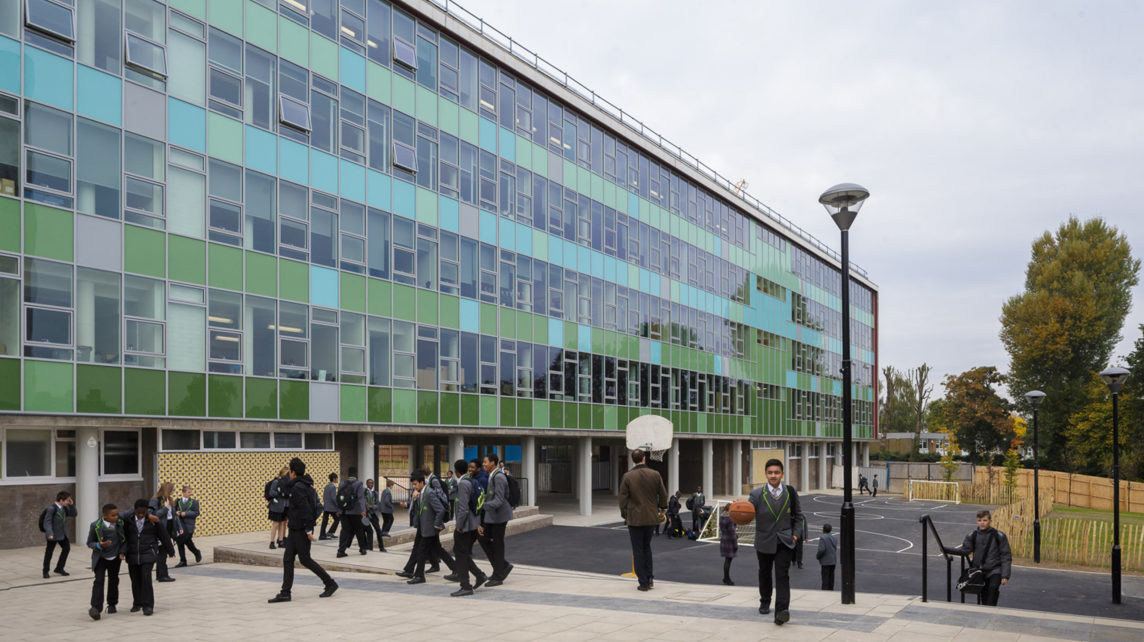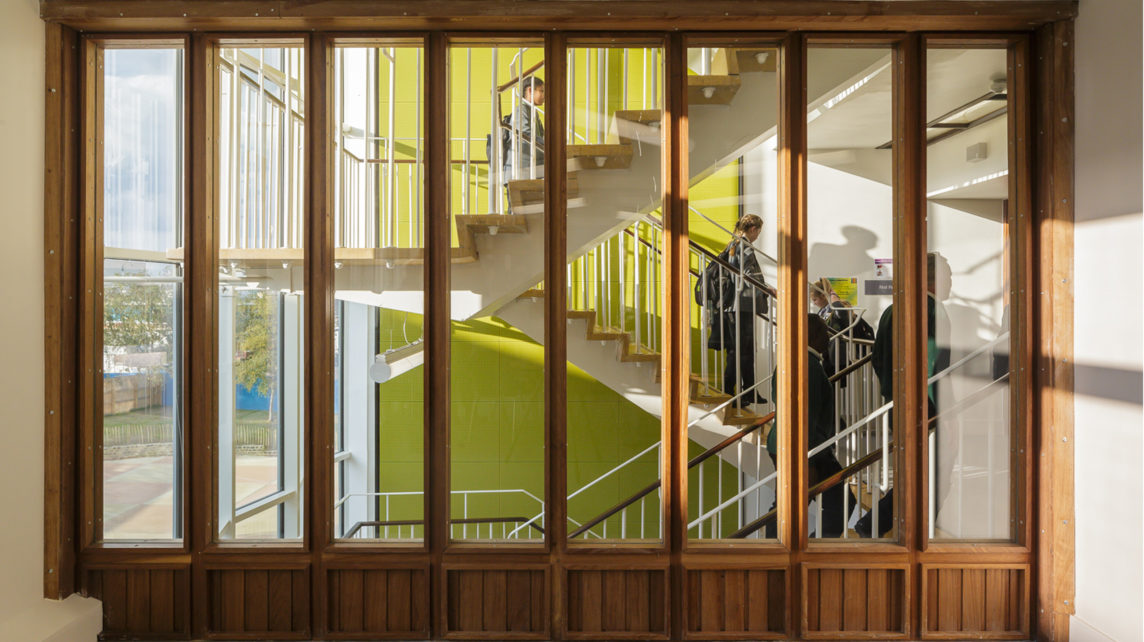Get updates from The Developer straight to your inbox Yes, please!
The social value of good design
When Michael Riebel, researcher at Hawkins\Brown, reviewed the growing number of social value metrics out there, he found there wasn’t anything that quantified the value of design. How do we add it up? Christine Murray asks

C an the design of a place make people happier or healthier? Can architecture itself make a positive social impact, and can that value be quantified on a spreadsheet?
Those are just some of the questions Michael Riebel, researcher at Hawkins\Brown, sought to answer in a report on social value, written in collaboration with Hatch/Regeneris.
In the wake of the government’s Social Value Act, Reibel was reviewing the growing number of social value metrics out there. He found there wasn’t anything that quantified the value of architecture, so he decided to give it a try through a post-occupancy analysis of the practice’s own work:
“It’s been done from the selfish perspective of the architect,” Riebel says, speaking of the report. “There is no such thing as a design metric” for social value, Riebel explains. “We found that the current metrics don’t really help.”
Hazel York, Managing Partner at Hawkins\Brown agrees that while current social value frameworks acknowledge the role of the designer as a facilitator, they fail to acknowledge the value that good design can bring.
“There is, for example, no metric for how much a utility space contributes to personal well-being or how a well-arranged entrance area can improve social cohesion,” York writes in her introduction. “As designers, we know that little tweaks in layout can have an enormous impact.”
Hear the full roundtable conversation on social value and design, sponsored by Hawkins\Brown. The roundtable was hosted by The Developer’s Christine Murray in October 2021 and features an independent conversation with
Matt Woolgar, Hadley Property Group
Hazel York, Hawkins\Brown
Natascha McIntyre Hall, Portsmouth City Council
Blossom Young, Poplar HARCA
May Molteno, Trilogy
Michael Riebel, Hawkins\Brown
Hani Salih, Quality of Life Foundation
Annabel Precious, Civic Engineers
As a starting point to quantify their own contribution, Hawkins\Brown defined four ways that architects influence social value: they can be socially-responsible employers (in-house social value), they can create social value by design either by delivering the brief of the project well (embodied) or enhancing the brief (by design) and finally architects can enhance social value during project delivery (process), which would include initiatives such as community engagement, education or apprenticeships.
Then Riebel evaluates six Hawkins\Brown projects using a range of social and environmental metrics. For Corby Cube, Hawkins\Brown shows how altering the brief to co-locate council services with a library translates into financial value. The library was placed along a ramp that leads to council services, inviting passers-by to “casually book-browse”. The increase in library footfall and usage is valued as a boost to wellbeing worth £885,000.
Another case study on the refurbishment of the Elliott School, now Ark Putney Academy, a decrease in teacher turnover and teacher sick days since completion is quantified as a saving of £4,000 per year.
Riebel presented the report at a live podcast recording in London hosted by The Developer and supported by Hawkins\Brown. During the independent roundtable discussion, leading figures from the industry, from private developers to housing assocations, discussed their individual approach to social value and the role of design.
As the conversation unfolds, it’s clear that everyone around the table is committed to delivering social value, but we don’t all share the same priorities or metrics of success. Creating social value by design is often not on the radar for developers, so much as creating opportunities and networks for local people.
For Annabel Precious, regional director at Civic Engineers, design is critical in creating attractive streets to encourage active transport – a key driver for social value in their work.
“We have a real passion for how we can impact people’s quality of life through infrastructure,” Precious explains, emphasising how the space between the buildings can make it attractive and safe for people to cycle or walk.
“Our streets are not designed for active travel, and that’s disempowering. We’re aiming for a place where people feel safe and empowered and get themselves from A to B,” she adds. Active transport can be quantified in the financial benefit of improved health and wellbeing, increased footfall to shops and high streets, decreased pedestrian injuries and fatalities, as well as a reduction in emissions and air pollution.
Several voices around the table spoke up for taking a human-centric view of development. May Molteno, Head of Sustainability and Stakeholder Engagement at developer Trilogy, says with social value, she is focussed on supporting networks of relationships and community engagement. “When I think about social value, I don’t think about design, I think about social capital. How do we put people as the key driver in our society, not profit?”
Blossom Young, Head of Operations at Poplar Harca, agrees, describing social value in terms of community cohesion and support for existing communities. “We’re a housing association,” says Young. “As long-term custodians of the place... so much of the work that we’re engaged in is about how you create a confidence in the existing community so that when you have incoming residents, there’s a civic structure to buy into... I think that’s about working with community groups as they are.”
“When I think about social value, I don’t think about design, I think about social capital. How do we put people as the key driver in our society, not profit?”
The question for Young is how to invest in existing residents and their businesses to ensure the future community is mixed, thriving and robust. “The sense is of a place, not being created, but shaped and transformed, creating opportunities for existing and future,” Young adds, explaining how they support local businesses during development, so that they can scale and grow into new spaces.
Measurement is also important to realising social value, to create a common language and accountability through performance indicators.
Matt Woolgar, Project Director at Hadley Property Group, says that while they place social value at the heart of everything they do, it’s not easy to keep the whole development and delivery chain aligned. “We’re developing a language to comment on [social value] as a distinct topic, setting benchmarks to help us improve the process, but how do you ensure those pillars that you set out at the start are still being maintained by our contractor six weeks before completion?”
Natascha McIntyre Hall, Assistant Director Strategic Developments at Portsmouth City Council, believes it’s important to articulate a clear legacy and ethos from the outset of a project. “If you start designing around a central theme, it doesn’t matter how much value engineering comes in, you won’t be able to get rid of that soul of the project.”
“We embed it as an ethos and talk about it from the beginning. On our website, we show how we’re going to measure it – for example, reduced GP visits.”
Without an ethos and shared vision, McIntyre Hall says, “social value is just the spreadsheet at the beginning of a project that shows how many donations you’re going to make… almost like a tax on consultants and contractors.”
How do you ensure those pillars that you set out at the start are still being maintained by our contractor six weeks before completion?
As for the government’s Social Value Model, now mandatory for all central government contracts since 1 January, 2021, while it doesn’t use a financial-proxy for the contribution from social value, it is numeric, tracking percentage improvements in specific areas, for example counting up the number of jobs or green spaces created, or the number of people-hours spent.
For tenders, Social Value has a mandatory minimum weighting of 10% at the evaluation stage for national government contracts, so it must be considered when evaluating bids. The criteria is pinned to specific policy outcomes, these are: increasing supply-chain resilience and capacity; creating new businesses, jobs and skills; help for local communities to manage and recover from the impact of Covid-19; effective stewardship of the environment; reducing the disability employment gap; tackling workforce inequality; improving health and wellbeing; and improving community integration.
While the government benchmarks feel slight, the growth in impact investing and ESG have led to a growing number of social value models and metrics at various stages of development. The ambition is to track social and environmental contributions as closely as you would track a financial return.
The Design Council is in the early stages of its search to quantify and qualify the social and environmental value of design for its upcoming Design Economy report. Its preliminary paper on Moving Beyond Financial Value begins with a debate on the definition of value itself, then suggests quantitative and qualitative ways you might go about measuring it; it’s the first step in their mission to establish the kind of singular social value design metric Riebel was looking for.
The Impact Management Project aims to create a global model that everyone can agree on, and its resources page provides a glimpse into the dizzying number of approaches being taken across the world. GRESB is another global member-based organisation setting ESG benchmarks in the property industry.
Created for the housing industry, the UK Social Value calculator, pioneered by HACT, puts a price on everything, including the value of improving the energy efficiency of a home by two EPC bands – equivalent to £434 per adult living there. There’s a price for averting homelessness, supporting mental health, reducing anti-social behaviour and more. Not worrying about crime is worth more than £12,000 per person.
In contrast, at the Quality of Life Foundation, the emphasis is on liveability and the research is more qualitative. Hani Salih, Community Engagement and Research Assistant at Quality of Life, says “We try to look at what it means to live there after the one-year mark and the four year mark. Our framework is very modular, we have six main themes, such as nature, wonder and health. It can be applied at a variety of scales… but speaking to people is the main thing.”
As our conversation on social value draws to a close, there’s hope that putting social value on a spreadsheet in pounds and pence will make it visible and harder to value engineer out. However you measure it, the intent represent a shared ambition to defend, support and follow-through on the making of well-designed and impactful places that make a positive contribution to the lives of residents and citizens.
The report, Delivering Social Value is the result of a year-long research project by Hawkins\Brown, in which a broad range of socio-economic metrics were applied to six completed projects to gauge their social impact – in housing, education, civic and commercial environments. The report acknowledges the immense progress that’s already been made in social value and highlights some areas where more could be done.
With thanks to Matt Woolgar, Hadley Property Group, Natascha McIntyre Hall, Portsmouth City Council, Blossom Young, Poplar HARCA, May Molteno, Trilogy, Hani Salih, Quality of Life Foundation and Annabel Precious, Civic Engineers
Support The Developer on Patreon
Our journalism has always been free-to-air.
If you value what we publish, be our patron from £3 per month
Sign up to our newsletter
Get updates from The Developer straight to your inbox
Thanks to our organisation members
© Festival of Place - Tweak Ltd., 124 City Road, London, EC1V 2NX. Tel: 020 3326 7238


